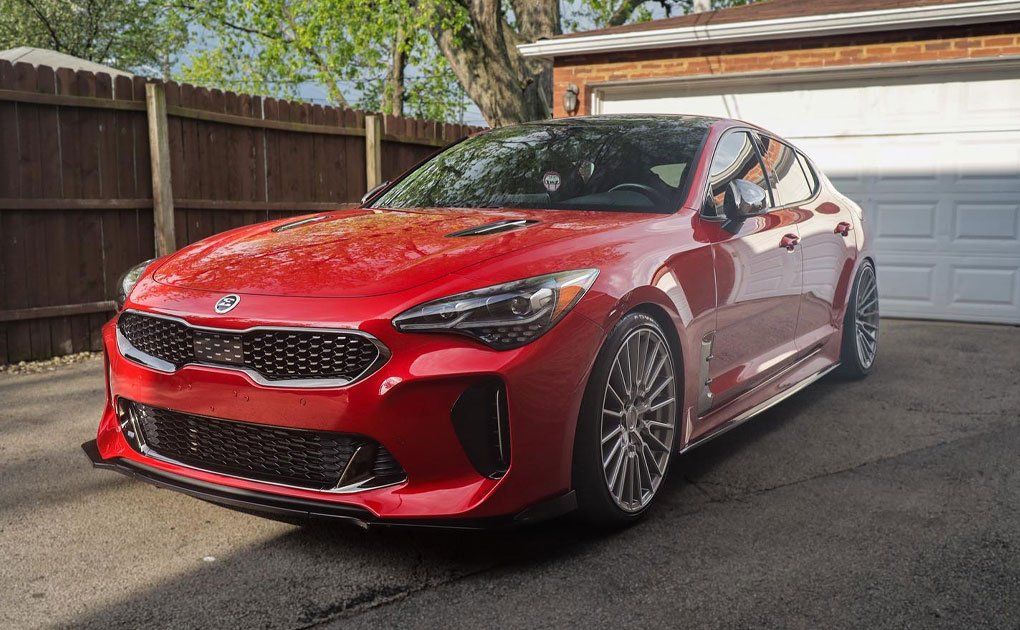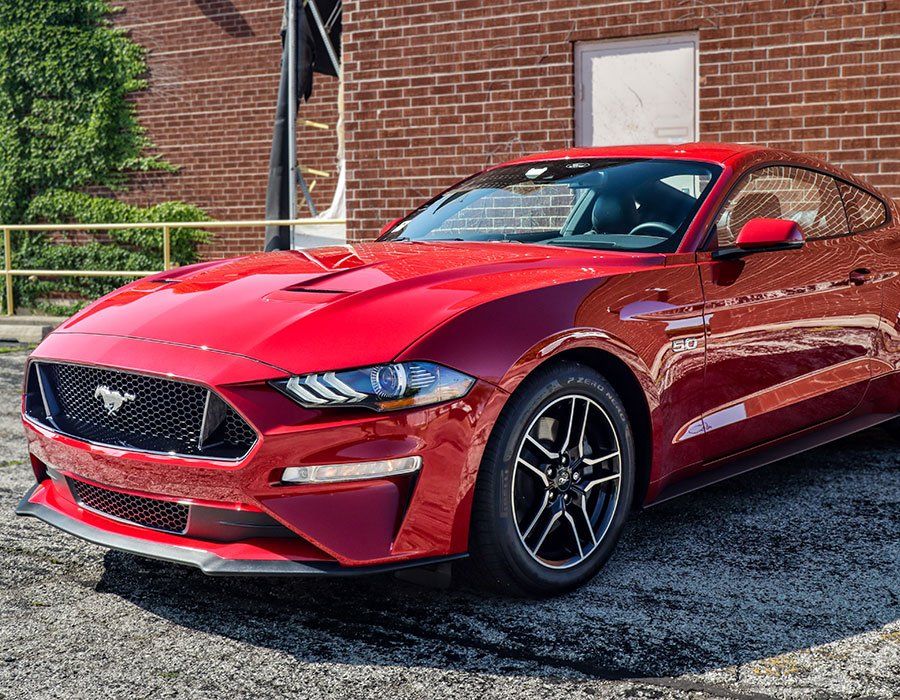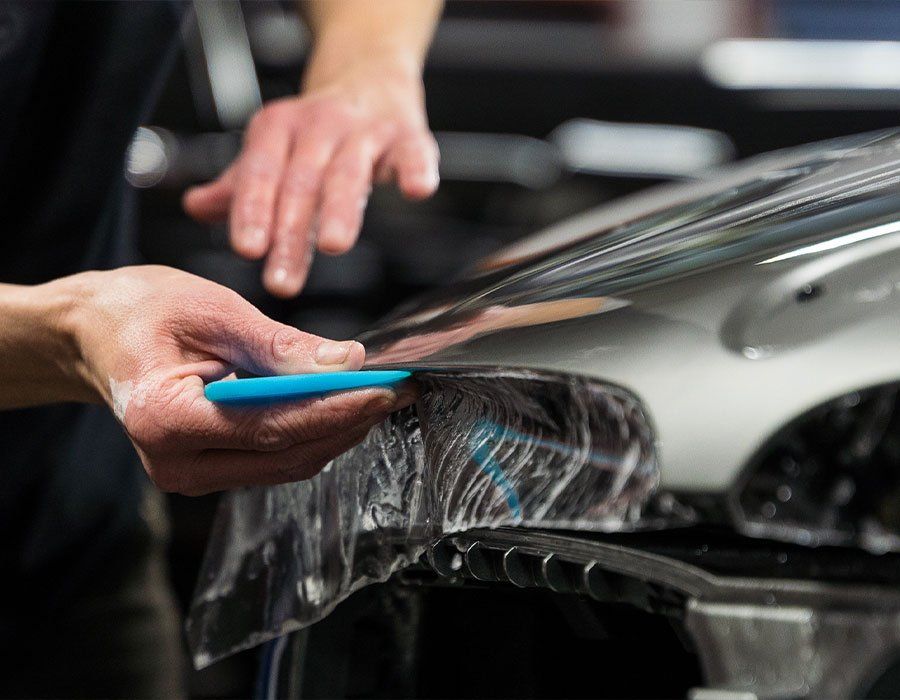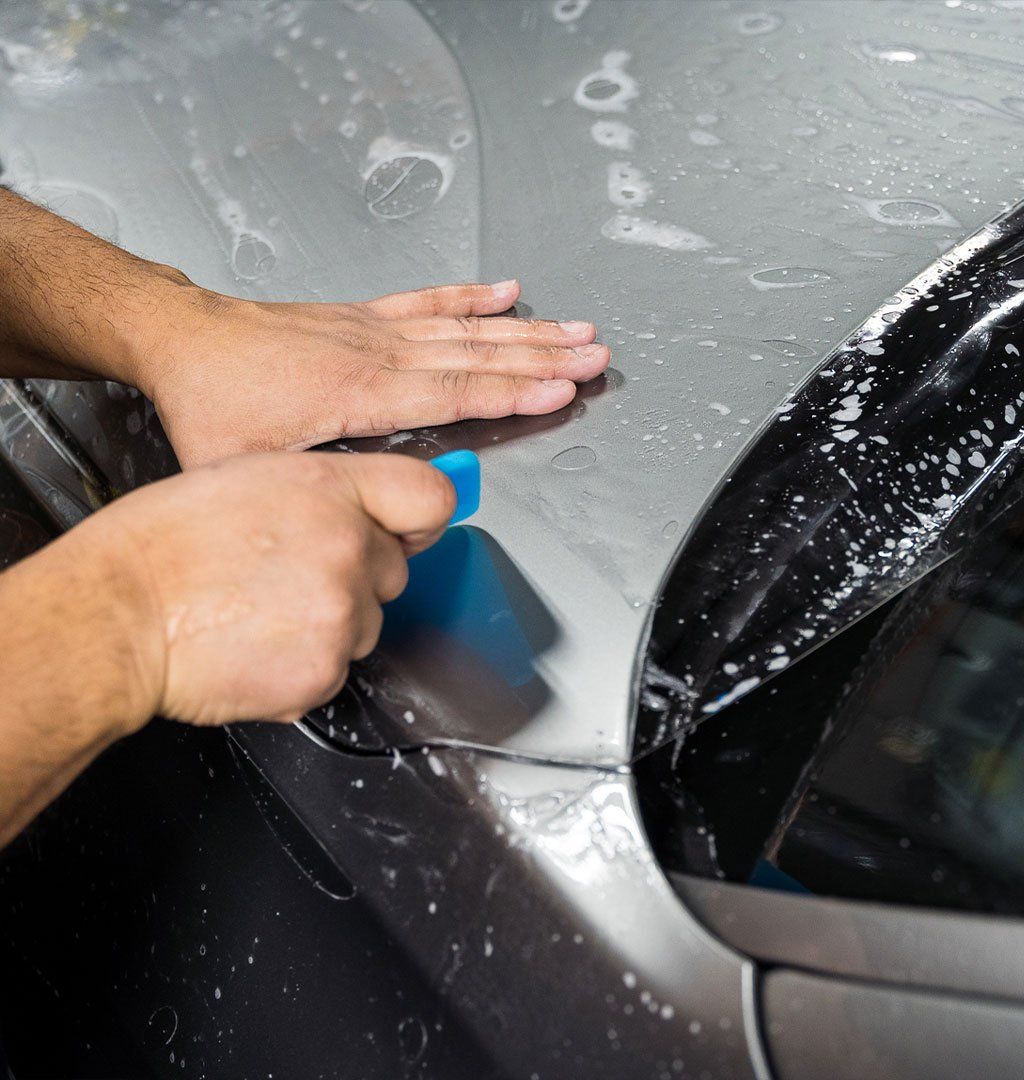Why PPF is Essential for High-Mileage Vehicles: Protect Your Investment
CALL (708) 574-8496
GET A FREE ESTIMATEWhen you think about taking care of your car, protecting the paint might not be the first thing that comes to mind—after all, it’s just a layer of color, right? However, for high-mileage vehicle owners, preserving that paint is anything but trivial. Paint Protection Film (PPF) has emerged as a game-changer for those who want to keep their vehicle looking sharp, avoiding the headaches and costs associated with chips and scratches. By adding a simple transparent shield, you’re not just enhancing aesthetics; you’re making a smart investment in your vehicle's future value and longevity. Let’s dive into why PPF is essential for those who rack up the miles!
Paint Protection Film (PPF) is crucial for high-mileage vehicles as it provides a durable barrier against road debris, scratches, and environmental damage, helping to preserve the vehicle's appearance and resale value over time. By investing in PPF, vehicle owners can reduce the need for costly repainting and repair, ultimately saving money while extending the life of their vehicle's paint job.
The Importance of Paint Protection Film (PPF)
Paint Protection Film (PPF) serves as an essential defense against various forms of damage, particularly for high-mileage vehicles. As these vehicles are constantly exposed to road debris and environmental elements, they become increasingly vulnerable to unsightly chips, scratches, and other damage over time. When you apply PPF, you create a bulwark shielding your car’s paint from harmful particles that can cause deterioration. This film isn’t just a clear coat; it’s a robust layer made from specialized materials designed to absorb impact energy, minimizing any potential harm your vehicle may suffer.
Consider for a moment how often your car encounters hazards on the road. Each time you drive over gravel or dodge a stray rock kicked up by another vehicle, you're at risk of damaging your car's paint surface. In fact, statistics reveal that vehicles with PPF experience up to a 50% reduction in paint damage compared to those without. That’s no small number. Additionally, modern PPF technologies, like those found in reputable brands, incorporate self-healing properties, meaning minor scratches actually dissipate when exposed to heat—like during a sunny day! The combination of these protective features ensures that your car maintains its sleek appearance while enjoying a longer lifespan.
But beyond just physical protection, PPF has significant implications for your vehicle's resale value. When it comes to selling your vehicle down the line, the exterior condition is one of the first things prospective buyers notice. According to a study by Kelley Blue Book, cars with well-maintained exteriors can command an extra $500 to $1,500 more at resale. Think of PPF as an insurance policy for your investment; the initial expenditure on installation—typically ranging from $1,500 to $2,500—can easily pay off several times over through added resale value. For high-mileage vehicles specifically, the financial stakes are even higher since they are already prone to wear and tear. Keeping that pristine look can mean the difference between attracting potential buyers or driving them away due to visible imperfections.
Another benefit stemming from PPF application is its capacity to withstand harsh weather conditions. Properties such as UV resistance and moisture barrier contribute significantly to PPF’s functionality. Vehicles subjected to intense sunlight and acid rain face a higher risk of paint degradation over time. Nonetheless, with PPF acting as a shield against 99% of harmful UV rays, it protects against fading and oxidation while keeping the paint vibrant for years. Many drivers who reside in regions with extreme climates find peace of mind knowing that their investment is safeguarded from the elements. Moreover, studies indicate that approximately 70% of vehicle owners report lower maintenance costs due to reduced needs for waxing and polishing when applying PPF; in essence, you’re not only protecting your vehicle but also saving time and money on additional upkeep.
Given these multifaceted advantages—from enhanced physical protection against everyday threats to boosting resale value—the case for adopting this protective measure becomes increasingly compelling as we transition into understanding its inner workings.
How Paint Protection Film Works
At its core, PPF is a remarkable innovation that safeguards your vehicle's exterior against the relentless barrage of road debris, scratches, and environmental factors. This thin but durable film creates a defensive barrier to maintain not just the aesthetic appeal but also the overall integrity of your investment. As we explore its composition, we can appreciate why so many car owners are opting for this protective solution.
Composition of PPF
Paint Protection Film is primarily composed of strong, thermoplastic urethane, which provides flexibility and resilience—qualities essential for effective protection. This material allows the film to stretch without tearing, absorbing impact energy from stones and debris encountered during drives. This capability transforms what could be damaging blows into harmless reactions for your car's paint underneath. In essence, it's like wrapping your vehicle in a form-fitting shield that bends and molds itself to the contours of your paintwork. Understanding this composition reveals how versatile PPF truly is, given that it seamlessly adapts to varying conditions while offering layered defense.
Layers of Defense
A typical PPF features several critical layers that each play a distinct role in protecting your vehicle:
- Top Coat: This layer is designed to self-heal from minor scratches through thermal action or sunlight exposure, ensuring that any marks almost vanish before you notice them.
- Polyurethane Layer: The heart of PPF's functionality, this layer absorbs impacts and disperses energy from any foreign object that makes contact with your car.
- Adhesive Layer: This adhesive firmly adheres to your vehicle’s surface without causing damage upon removal.
These layers work harmoniously to create an all-encompassing protective layer around your car’s paint, significantly decreasing the chances of damage from everyday hazards faced by high-mileage vehicles. With a clearer view of its composition and structure, it's equally important to visualize how PPF actually protects vehicles on the road.
Mechanism of Action
Picture PPF as a transparent suit of armor for your car. When rocks or other road debris strike the film instead of the paint, the film absorbs much of the impact energy due to its unique polyurethane properties. This reaction means that rather than transferring those forces directly to your vehicle’s paint—where chips and scratches can occur—the film acts as a buffer.
This mechanism is especially crucial for high-mileage vehicles often subjected to harsher driving conditions—frequent encounters with gravel roads or trips down busy highways mean higher exposure rates to potential damage. PPF enhances aesthetics while protecting against future repairs and financial costs associated with painting jobs or touch-ups due to wear and tear. By understanding these mechanics, we can better appreciate the extensive advantages provided by such protective measures for our rides.
Benefits for High-Mileage Vehicles
For high-mileage vehicles, the advantages provided by Paint Protection Film (PPF) are especially important. One significant benefit is its ability to drastically reduce maintenance costs. Regular maintenance of a vehicle's paint can become a financial burden, with expenses for touch-ups and repairs easily exceeding $1,000 annually, as shown by research from the Federation of Motor Traders. However, with PPF installed, these expenses can be significantly minimized. This durable film creates a shield against numerous threats, such as road grit, rocks, and other debris that can harm the painted surface. By effectively absorbing these impacts, PPF helps to keep your vehicle looking newer for longer. Not only does it safeguard your vehicle financially; it also ensures longevity in protection.
- Reduces Maintenance Costs: The durability of PPF is another tremendous advantage that high-mileage vehicles benefit from immensely. Most PPFs can last up to 10 years with proper care, making them an economically sound solution for those who are clocking countless miles on their vehicles. Imagine a situation where you'd otherwise need to shell out significant sums for repaint jobs every few years; installing PPF changes that narrative completely. By reducing how often you might need to repaint your car due to wear and tear, you preserve the appearance while protecting your investment over time. But it doesn’t stop there; PPF adds an extra layer of strong protection.
- Provides Long-Term Durability: When it comes to extended safeguarding, PPF truly shines by enhancing overall protection against various forms of damage. Beyond just physical impacts from road debris, PPF also provides impressive resistance against chemical stains and environmental hazards such as bird droppings and tree sap. These types of contaminants can leave unsightly marks or cause deterioration over time if left untreated. With PPF acting as a barrier, your vehicle is better equipped to withstand these common threats on the road, thereby extending its lifespan. This multifaceted defense system ensures that your car is ready for anything the road throws at it.
- Enhances Overall Protection: For those getting behind the wheel of high-mileage vehicles regularly exposed to weather changes and frequent travel, this added protection becomes crucial. It allows drivers to enjoy peace of mind knowing they have taken steps to maintain their vehicle’s value while minimizing costly repairs down the line. Embracing Paint Protection Film is not merely about keeping your vehicle looking pristine—it's about preserving its integrity over the long haul.
As we continue, it's essential to explore the steps involved in applying this protective film effectively.
Application Process Explained
To begin with, the foundation of a successful PPF application lies in surface preparation. This step is crucial; it involves cleaning your vehicle thoroughly to remove dirt, grime, and other contaminants that could compromise the adherence of the film. Using a pH-neutral car wash soap can make a significant difference—this gentle solution will not only clean but also maintain your vehicle's current finish. A detailed wash normally takes around 30 to 60 minutes, allowing you to scrutinize every nook and cranny. If you're feeling particularly meticulous, consider using a clay bar afterwards to further decontaminate the surface.
Once your vehicle is spotless, it's time to move on to template selection. When choosing the film templates, it's vital to select pre-cut options specifically designed for your make and model. These templates are engineered to lay out perfectly without overwhelming adjustments, which could lead to air pockets or misalignments during application. Having the right template on hand can save you a lot of hassle later on. This selection process typically takes around 15–30 minutes.
With an appropriate template in place, you're ready for adhesive activation. In this stage, you'll want to lightly wet the adhesive side of the PPF using a specialized application solution—think of it as a lubricant that allows you to maneuver the film before it permanently sticks. This somewhat slippery layer permits repositioning if necessary, making it easier to ensure precise placement on the vehicle's surface while avoiding costly mistakes. The adhesive activation process takes only a few minutes but is critical for achieving a smooth application.
Now comes the most hands-on part: the application itself. Carefully lay the film across the designated area of your vehicle. It’s essential that you start from one edge and progress slowly across to prevent air bubbles from forming. Use your fingers or a soft cloth to smooth out the film as you go along, gently pushing air toward the edges while ensuring proper alignment with adjoining areas. This meticulous attention can take 1-2 hours depending on how extensive the coverage is but it's well worth it for a professional finish.
Lastly, we reach the final element: finishing touches. This step involves using a heat gun or hair dryer set on low heat to activate the film’s adhesive properties effectively. Heating it gently aids in adhering the material uniformly to various curves and creases of your vehicle's bodywork while diminishing any minor imperfections that remain after application. Trim away any excess material carefully using a sharp knife or utility blade, ensuring that you don't damage your vehicle underneath. After everything is applied and trimmed correctly, let it cure undisturbed for 24-48 hours for optimal durability.
By following these steps meticulously, not only do you achieve a flawless PPF application, but you also preserve the structural integrity of your vehicle for years to come. As we transition into understanding both cost-benefit analysis and protective measures, it becomes clear that investing in PPF has profound implications for maintaining your vehicle's integrity over time.
Evaluating Long-Term Value
When you bring a vehicle home and start racking up those miles, the wear and tear begins almost immediately. Investing in Paint Protection Film (PPF) isn’t just about preserving that fresh-off-the-lot shine—it’s also about safeguarding your investment against inevitable damage from daily driving. Imagine the stress of chipped paint, scratches, and dullness gradually taking over your prized vehicle. This is where PPF steps in as a stalwart guardian of your car's aesthetic appeal.
The numbers really drive the message home. On average, installing PPF ranges from $500 to $2,500, depending on your vehicle’s size and the areas you choose to cover. However, costs associated with repainting a vehicle can soar between $2,000 to $5,000 if damage occurs. By acting preemptively with PPF, maintaining your car’s integrity not only saves you hefty maintenance expenses down the line but also enhances its resale value considerably.
Now picture this: You're preparing to sell your vehicle after several years of ownership. If you opted for PPF during that time rather than relying solely on traditional touch-ups and repairs, studies indicate your car could retain up to 15% more of its resale value compared to similar vehicles without such protection. Potential buyers often look for signs of care in a used vehicle; a shiny exterior protected by high-quality PPF sends a strong signal that you valued and maintained your investment.
Moreover, with today's technology advancements, many PPF products come equipped with self-healing properties that make them even more appealing over time. Just imagine how much smoother your experience will be when small scratches disappear effortlessly under heat from sun exposure; it feels like magic, doesn't it? These innovations underscore the value of staying informed about market offerings as we explore current developments in consumer preferences and industry standards.
Premier Paint Protection Film Installation in Carol Stream, IL
Defend your vehicle’s finish with D’Andrea Auto Detailing’s expert paint protection film services in Carol Stream, IL. Our PPF installations safeguard your car’s paint from rock chips, scratches, and environmental hazards while maintaining its flawless appearance. With precision application and premium materials, we provide a seamless finish that keeps your vehicle looking its best for years to come. Protect your investment with confidence—schedule your PPF installation today!
D’Andrea Auto Detailing was founded in 2021, setting out to be part of the solution to the obstacle of achieving automotive protection and perfection in the often messy Midwest city of Carol Stream, Illinois. We provide two types of high-quality vehicle paint protection services - Undrdog Ceramic Coatings and XPEL Paint Protection Films - alongside individual interior rejuvenation and exterior decontamination services. We aim to help both top-tier sports cars and daily drivers always look their best and operate even better!
Quick Links
Hours of Operation
Monday-Friday: 8:00 AM - 5:00 PM
Saturday - Sunday: Closed
This website was designed by the team at
Detailers Roadmap, a platform developed for detailing operators across the globe.
All Rights Reserved | 8bitcreative, LLC | D’Andrea Auto Detailing





